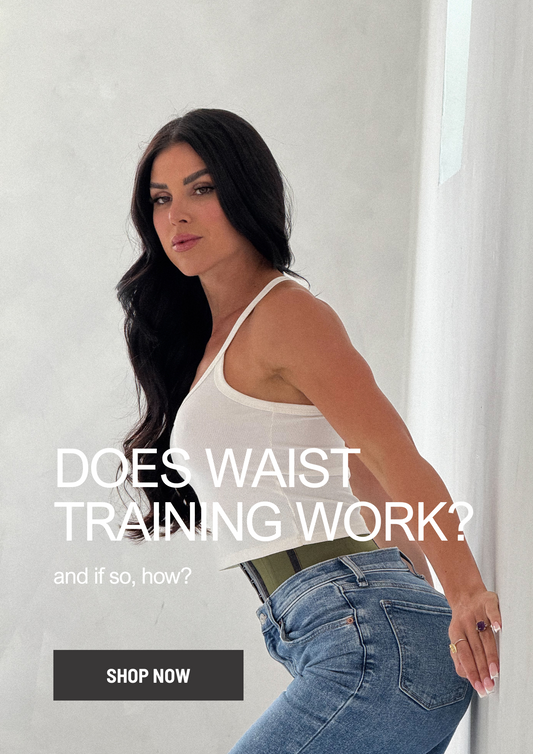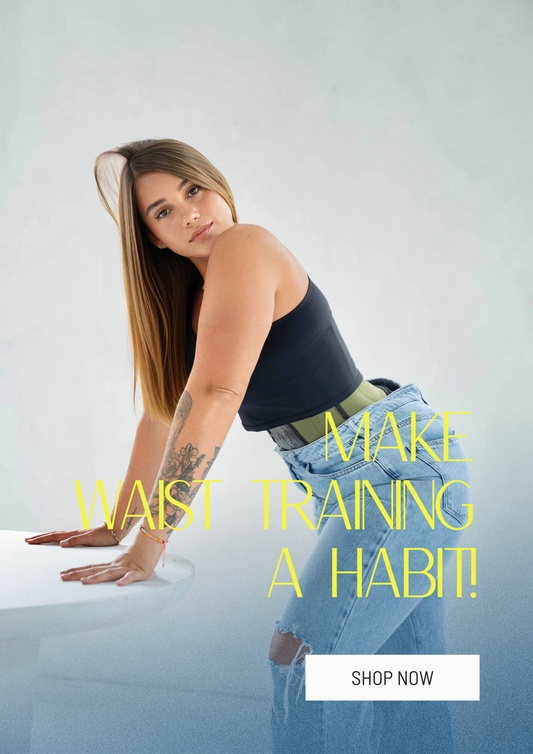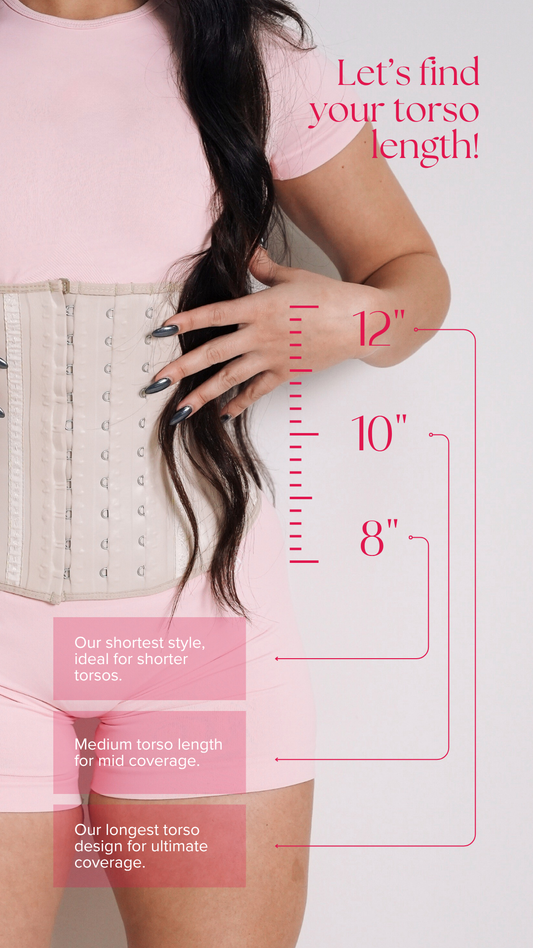
Waist Training Q&A: All Your Questions Answered
Q: What size waist trainer should I get?
A: To find your correct size, use a measuring tape around the narrowest part of your waist, typically just above your belly button. Once you have your measurement, refer to our size chart to choose the most accurate fit. Wearing the wrong size can affect your comfort and results, so avoid guessing or sizing down. A properly fitted trainer should feel snug but not restrictive.
Q: What’s the difference between latex, neoprene, and corset styles?
A: Each material serves a different purpose. Latex waist trainers are firm and help sculpt your waist with high compression, making them great for daily shaping. Neoprene trainers are softer and designed to increase sweat during workouts, which makes them perfect for gym sessions or cardio. Corsets, on the other hand, are more structured and give a dramatic hourglass shape using steel or hard boning. They’re better for occasional use or special occasions.
Q: Does waist training help you lose weight?
A: Waist training itself doesn't directly burn fat, but it can support weight loss when paired with healthy eating and exercise. Wearing a waist trainer increases thermal activity in your core, making you sweat more and helping reduce bloating. It also makes you more aware of your posture and eating habits, which can help with portion control and staying on track with your fitness goals.
Q: How long should I wear my waist trainer each day?
A: If you're just starting, begin with 1 to 2 hours a day. Give your body time to adjust and avoid wearing it for too long in the beginning. After a few days, you can increase to 4 to 6 hours, and eventually up to 8 hours if it feels comfortable. The key is to be consistent but also listen to your body. If you ever feel discomfort or shortness of breath, take it off and give yourself a break.
Q: Can men waist train too?
A: Yes, waist training is for everyone. Men can benefit just as much as women when it comes to improved posture, core support, and enhanced workouts. Male waist trainers are usually designed with a straighter cut and offer compression that supports the lower back and abdomen. They're great for daily wear or gym sessions and help maximize core engagement.
Q: How do I clean my waist trainer?
A: To keep your waist trainer in great condition, always hand wash it with cold water and mild soap. Avoid using a washing machine or dryer since the heat and movement can damage the material and shape. After washing, let it air dry flat or hang it up, but never wring it out. Cleaning it regularly helps prevent bacteria build-up and keeps your waist trainer fresh.
Q: Can I work out in my waist trainer?
A: Yes, working out in a waist trainer is safe as long as you’re wearing one designed for physical activity. Neoprene or sport-style trainers are more flexible and breathable, allowing your body to move naturally while still providing compression. These types increase sweat and heat in your midsection, which can help you feel more toned and supported during your workout.
Q: Will waist training change my body permanently?
A: Waist training can enhance your shape while you wear it, but long-term or permanent changes only happen when it’s part of a healthy lifestyle. If you're consistent with your waist training, eat clean, stay active, and drink plenty of water, you’re more likely to see and maintain lasting results. Think of your waist trainer as a tool to support your journey, not a magic solution.
Q: When will I start seeing results?
A: Everyone’s body is different, but many people notice changes within 1 to 2 weeks of consistent use. You might see less bloating, improved posture, and a more defined waistline. The more regularly you wear it and combine it with clean eating and movement, the quicker you’ll see progress. Be patient and focus on steady results rather than instant changes.
Q: Can I sleep in my waist trainer?
A: Sleeping in your waist trainer is optional and depends on how comfortable you feel. If the trainer is breathable, not too tight, and doesn’t disturb your sleep, you can try it. However, it’s not necessary to wear it overnight to get results. Most people stick to daytime wear since that’s when you’re moving and upright, allowing the trainer to do its job more effectively.
Still have questions?
Feel free to message us directly or explore our story highlights for more guidance. Waist training is a personal journey, and we’re here to support you every step of the way.
contact us at squeezmeskinny@gmail.com




